GMB Everywhere in Action: Finding Revenue Categories
This shows how GMB Everywhere—using Teleport and the AI Category Finder—helps you spot valuable Google Business Profile (GBP) categories that others miss, without guesswork or pricey rank tools. We follow a locksmith shop, LockTight Miami, and owner Margo as she looks for more service calls in a crowded market. Everything is logged in order so you can copy the process for your own profile.
09:00 – Spotting the First Clue
Margo opens the Performance tab in her GBP dashboard (calls, views, bookings, etc). She sees Wednesday calls are down compared to last quarter. She wonders, “Are competitors using a category I haven’t added yet?” Google’s own guide says categories are a top relevance signal in local search (Local ranking help). Time to dig in.
09:10 – Teleport to the Action
Margo clicks the GMB Everywhere icon in Chrome (install via gmbeverywhere.com → Install Chrome Extension → Add to Chrome → pin the icon).
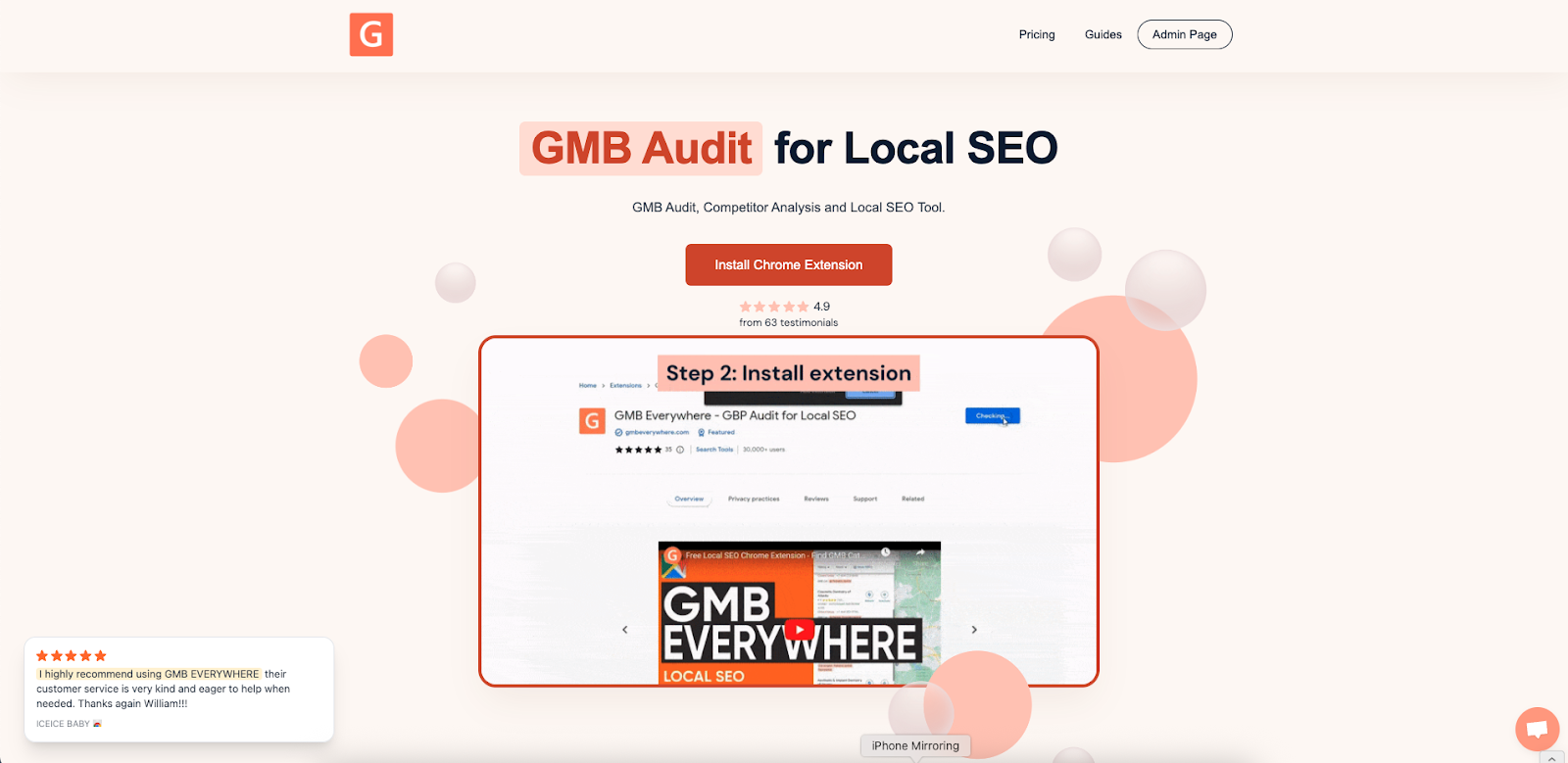
She opens Teleport, types Locksmith to view results as if she’s standing in Brickell.
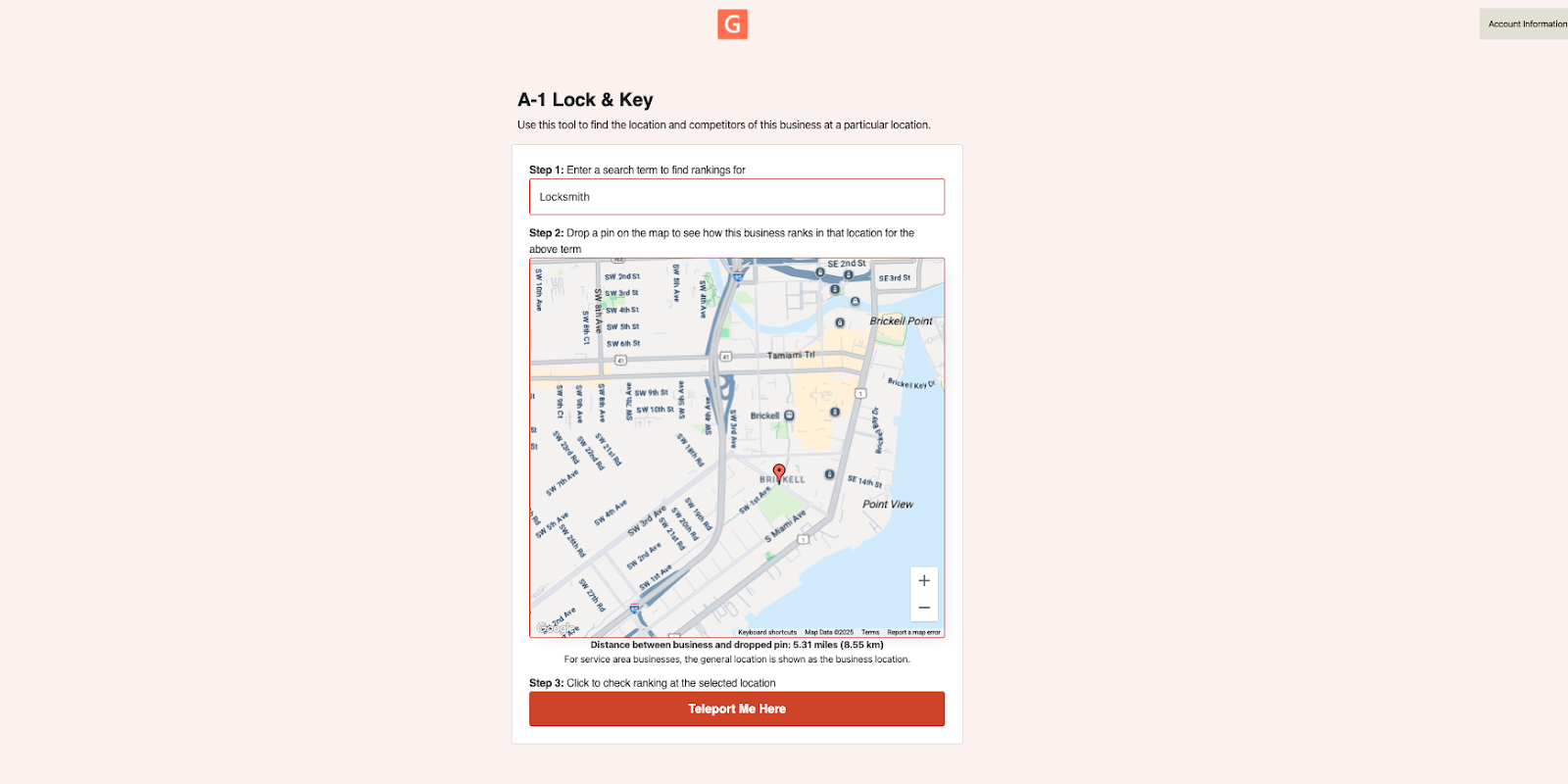
Right away, My Locksmith Miami shows at the top. Clicking over their listing reveals their categories: Primary: Locksmith; Secondary: Key Duplication Service—a mix Margo hasn’t tried.
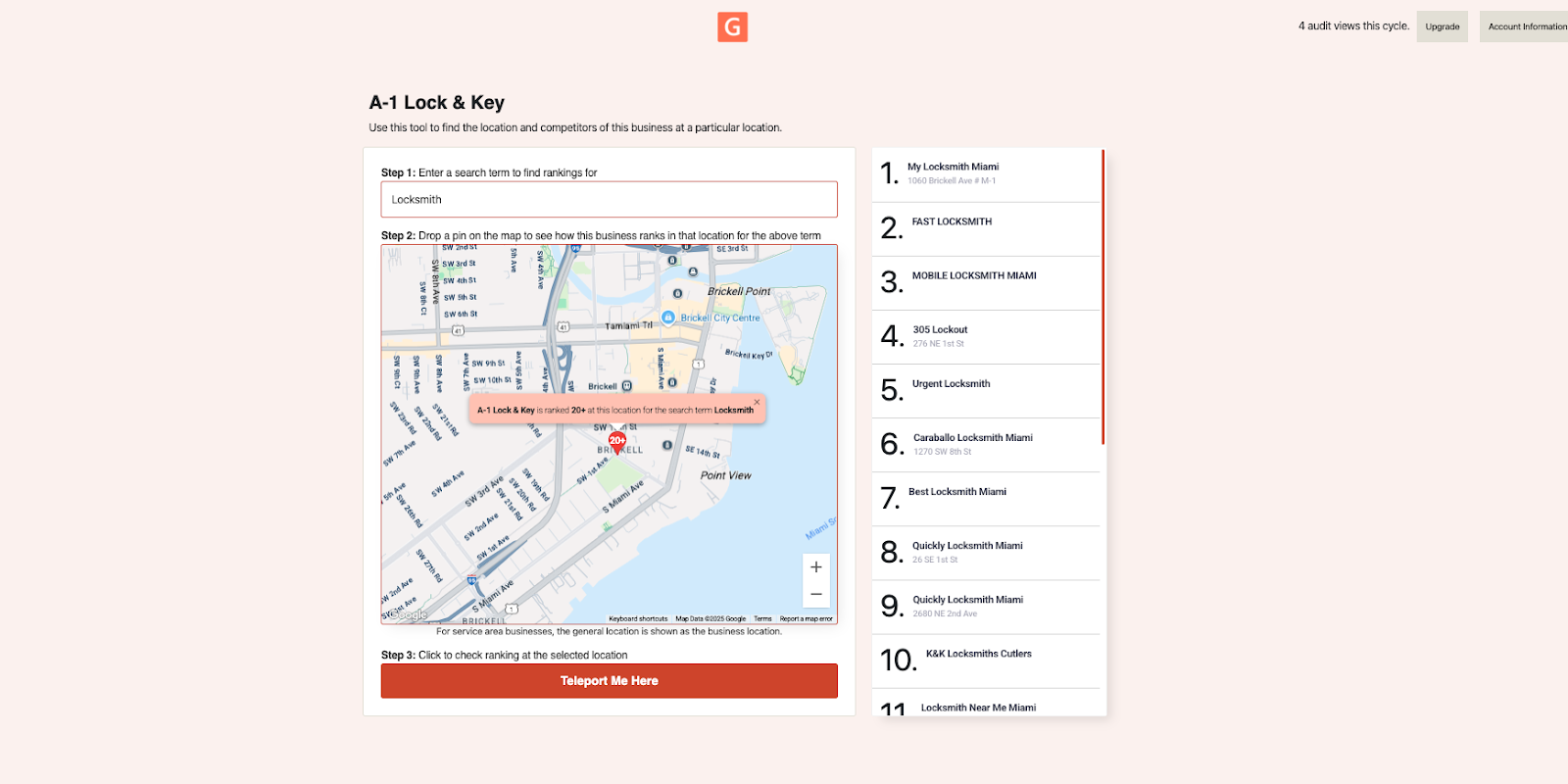

09:20 – AI Category Finder Brings Ideas
Still in the same session, Margo goes to link.gmbeverywhere.com/ai-tools and opens AI Category Finder.
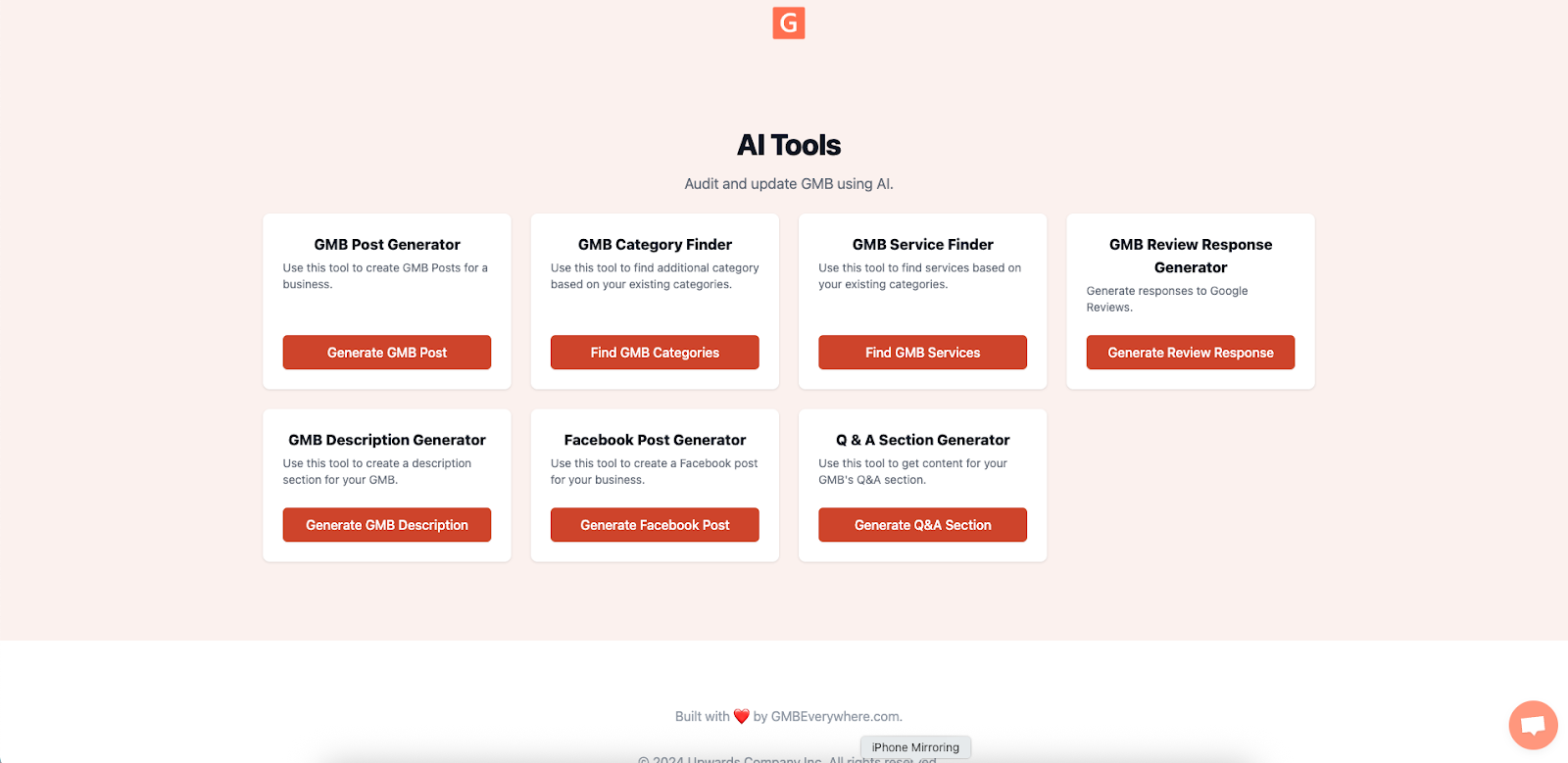
She picks Locksmith as the reference category. The tool suggests related categories based on competitor patterns and Google’s current list. The best match is “Residential Lock Repair.” It fits her actual work and fills a gap on her profile.
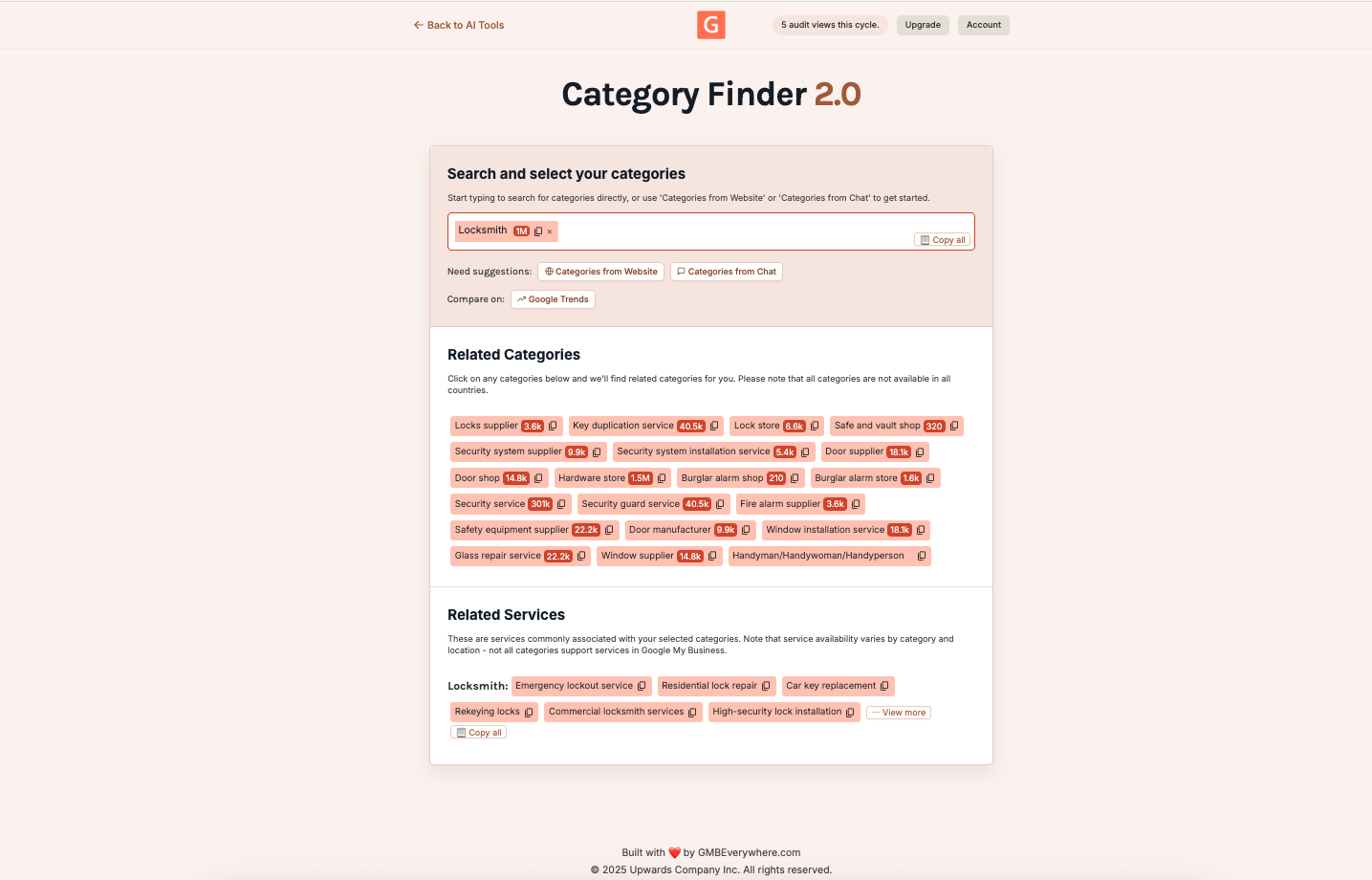
09:25 – Quick Reality Check
Before editing her listing, Margo checks search intent:
- She looks at People Also Ask for “residential lock repair” and sees questions that match what she does (for example, “Who installs safes near me?”).
- She uses Google’s free Keyword Planner to confirm steady search interest for safe installation around Miami.
Everything lines up, so she adds the secondary category in her GBP dashboard (Edit Profile → Categories) while keeping Locksmith as primary.
09:40 – Light Tracking Setup
Margo notes today’s date and her current calls/views in a simple sheet. Because the GBP Performance tab already reports calls, messages, bookings, and website clicks, she relies on those builtin numbers. She knows Google may take a day or two to fully reflect the edit, so she gives it a little time.
11:45 – More Areas, More Ideas
With the first test running, Margo Teleports again—this time to Downtown Miami. The AI Category Finder points to “Door repair service.” She already offers door repairs, so she logs it as her next test. She’ll run it in a separate two‑week window to keep results clear.
Two Weeks Later – Clear Lift
Back in the Performance tab, Margo compares before‑and‑after numbers:
- Discovery calls are higher.
- Actions tied to safe installation show up in her logs.
- Direction requests tick upward.
The lift is real and came with zero extra ad spend. The new category is bringing in fresh searches.
Next Moves
With good results, Margo:
- Keeps residential lock repair active.
- Adds a matching service entry in the Services tab (“Safe installation – floor & wall”).
- Publishes a GBP Post showcasing a recent safe install, using strong images and a clear call to action.
- Plans a new two‑week test for “Door repair service.”
These steps reinforce the category change and boost relevance.
Your Timeline Template
- +00 min: Teleport to a neighborhood (Teleport in GMB Everywhere).
- +05 min: Note the top competitor categories.
- +10 min: Run AI Category Finder for smart suggestions.
- +20 min: Check search intent (People Also Ask, Keyword Planner, trends tools).
- +30 min: Add one new category in your GBP dashboard.
- +35 min: Log your baseline metrics (Sheet or doc).
- +14 days: Compare Performance metrics to see the change.
Smooth Tips
- Make one category change per test cycle so you know what caused any shift.
- Pick categories for services you actually offer today. This keeps everything accurate and trusted.
- Check the category list every quarter (March, June, September, December are easy touchpoints) to catch fresh options.
- Update your Services list and other fields to match new categories so all signals line up.
Quick FAQ
Will my rankings move when I change a category?
Small shifts can show up while Google reprocesses your info. Give it at least two weeks and watch the Performance tab.
Do I need Teleport?
Manual ZIP searches help, but Teleport gives fast, accurate views in local ranking.
How often should I tweak categories?
Quarterly reviews work well. Test more often if you clearly log each change and result.
Conclusion
By mapping competitor categories, checking real search demand, and testing one change at a time, Margo boosted discovery calls without extra ad spend. GMB Everywhere turned hours of manual checking into a quick, 40‑minute workflow. Small, smart edits—guided by live data—add up to real revenue. Ready to find your hidden category wins? Open Teleport, run AI Category Finder, and let data guide your next move.


.png)
.png)
.png)
.png)
.png)
.png)



